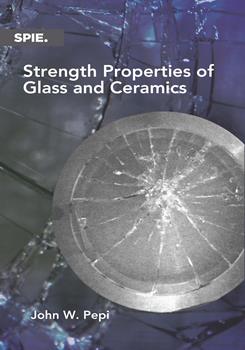|
Perhaps the best way to illustrate the techniques of the previous chapters is to review a classical lesson learned from a real case encountered in the industry. This will aid in the understanding of the principles set forth and help the reader to assess if he or she has grasped the concepts.
This example involves an aircraft window made of Schott BK-7 glass. The window was to be designed for aerial photography, demanding high resolution, and thus exhibiting desirable characteristics, particularly with regard to wavefront quality and refractive-index homogeneity. Plastic materials, such as Plexiglas®, which exhibit no slow-crack-growth phenomena, were not an option for design, being insufficient for the high acuity required. The window was to be mounted in the aircraft cabin fuselage, and, when not used for photography, was to serve as a window for passengers to enjoy the view.
|


